However many days you choose to stay in Berlin, Germany’s iconic capital city, it simply won’t be enough. Berlin is bold, its brash, it’s inspiring, it is magical, it’s fascinating, and above all, it’s big. I recently spent a jam-packed three nights discovering the city for my travel blog but I barely scratched the surface. That’s not so bad though, as it means I will have to go back!
With 3.4 million inhabitants and 12 very distinct districts, there is clearly a lot of ground to cover. Berlin has a rich, well-chronicled history stretching back through the Cold War, the two World Wars, and beyond. It is the largest city in the European Union, although if you consider its affordability, it is surprisingly reasonable when compared to some other larger European cities.
Berlin will tick every box. There is remarkable architecture both ancient and modern for the history buffs. There are museums and galleries for the culture vultures. A nightlife to rival any on the continent and a cuisine that is so good it will see you signing up to the local gym on your return home.
If you want it, you’ll find it in Berlin.
Hello Berlin
As you would expect, Berlin’s Brandenburg Airport is as modern and as state-of-the-art as there can be. Located just 27 kilometres from the city centre the journey time to the Alexanderplatz City Centre U Bahn or metro station is just 45 minutes.
I however chose to arrive at the enormous Berlin Hauptbahnhof Railway station in the heart of the city. Set over various levels with numerous platforms and shops the station is a little daunting at first however with a deep breath, a clear vision, and some logical thinking I soon found my way to an information office that pointed me in the direction of the U-Bahn that would take me to the East of the city where I was to make my home for the next three nights.
It’s good to get to grips with the U-Bahn system as to explore the city you will probably use it a fair bit as given the size of Berlin, it’s the fastest and most economical way to get around. The previously mentioned Alexanderplatz city centre station is a very popular starting point for tours to the key sights of the city.
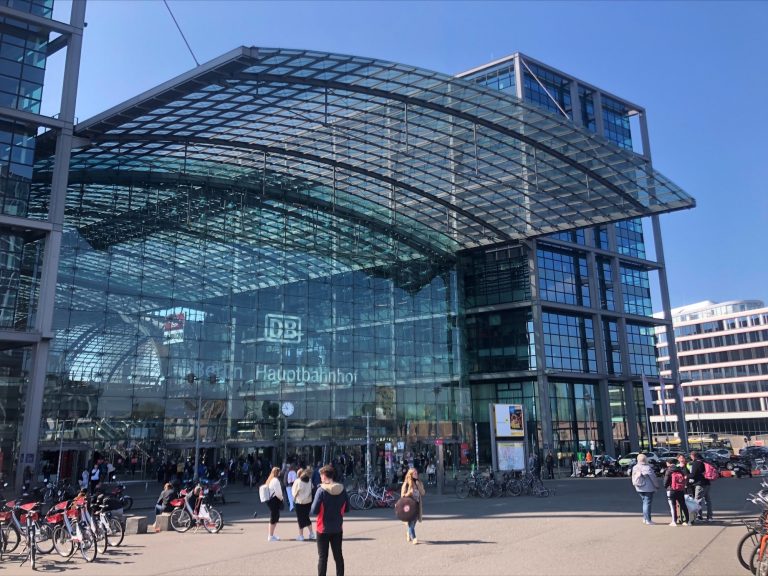
The Berlin Welcome Card
Whilst I was at the Berlin Tourist Information desk on the ground floor of the Berlin Hauptbahnhof station, I took the opportunity to pick up my pre-purchased Berlin Welcome Card that would give me 72 hours access in the zones A & B.
Most of the tourist attractions in Berlin are in zone A and zone B. Zone A spans the city centre of Berlin, including the S-Bahn-Ring. Zone B begins outside the S-Bahn ring and goes to the city limits.
This card will save you a fortune so make sure you do your research in advance and order yours – it will be worth it!

Getting Around
Berlin has a very efficient public transportation system. The best way to get around is by using the U-Bahn underground trains. Now if you do not have a Berlin Welcome Card then you can purchase tickets per zone and there are 10 different lines. The U-Bahn runs 24 hours a day at weekends and until 1 am on weekdays. Before boarding the U-Bahn, make sure to validate your ticket at one of the many machines. You cannot simply purchase a ticket and jump on board; it must be validated beforehand.
Another great way to enjoy the city is to take the Hop on Hop Off bus tours. They come with a map and headphones so you can get a running commentary in one of 16 languages. Sadly the commentary is broken up by some particularly cheesy 1970’s style lounge music which after a while starts to grate – at that point I had to hop off! As the name suggests you simply jump off when you get to a point you wish to explore and then pick up the trail when you are ready. The cost is 21 euros and covers the whole day.
Increasingly popular is the use of bikes with city projects underway to ensure bike lanes are becoming more readily available for cyclists.
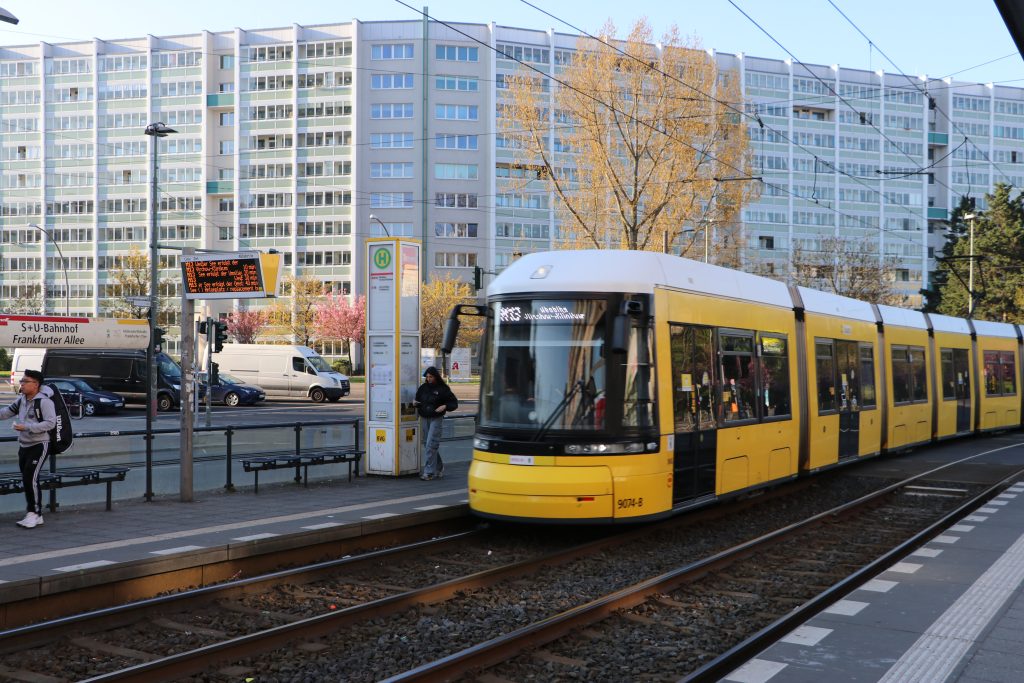
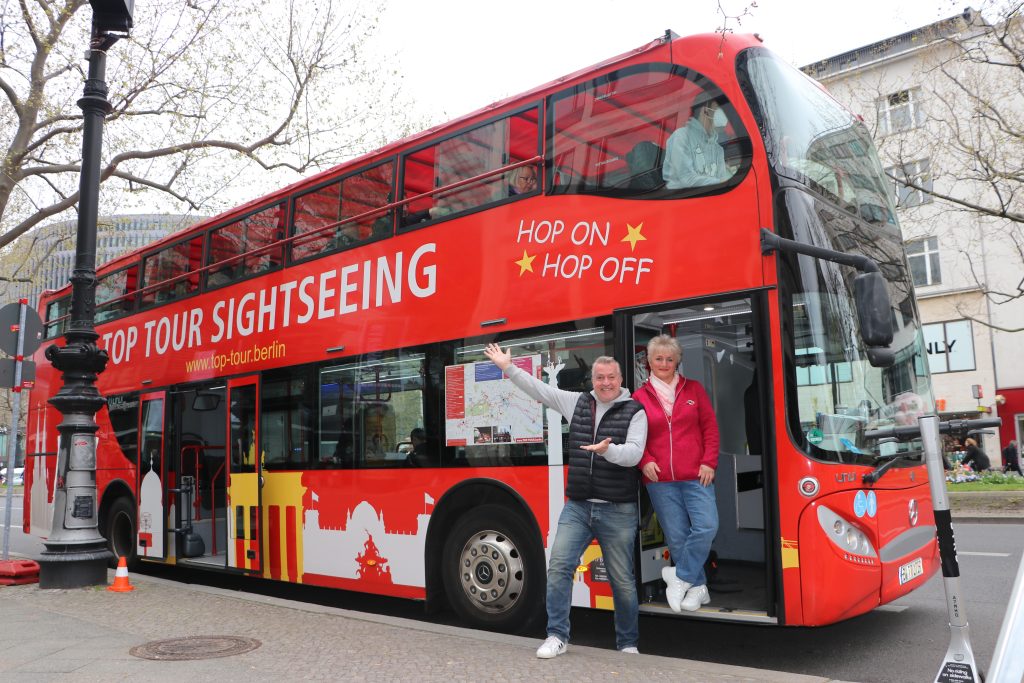
The Best Time To Visit Berlin
A popular time to visit Berlin is between May and September when the weather is at its best and there will be heaps of entertainment, festivals, and events to keep you busy. Be aware though that in high summer the city can be unbearably hot and with air conditioning not commonplace it can be a little uncomfortable.
April and October are ideal for city breaks as the prices are good during these months and the weather very comfortable for spending your day walking around and exploring.
The Berlin winters are long and cold however this period is broken up by the Christmas season and the sensational Berlin markets attract visitors from all over the world.
Where To Stay
Choosing the right location in Berlin is a must.
If you are planning to visit all the most popular iconic city centre locations, then you need to consider the district called “Mitte” that in German means central. Whilst you will be paying more for the location, the time and the inconvenience of travelling in from the suburbs may be worth it.
I was staying in East Berlin at the Almodovar Hotel. A stylish eco-friendly hotel offering funky clean and stylish rooms in a cool trendy part of the city and close to many restaurants, bars, and entertainments. The Bardot restaurant at this hotel is the star attraction with a huge choice of vegan and sustainable products making for a tasty breakfast to start your day.
Check out my full review of this lovely little hotel in an interesting and trendy part of the city.
Alexanderplatz Station
Whilst this is not really an attraction it is a great starting point for any day exploring some of the best places to see in Berlin as well as the most well-known and iconic sights of the city.
As I guide you through some of these places my journey starts here at Alexanderplatz Station and works my way along to the Brandenburg Gate and then back around to the East Side Gallery.
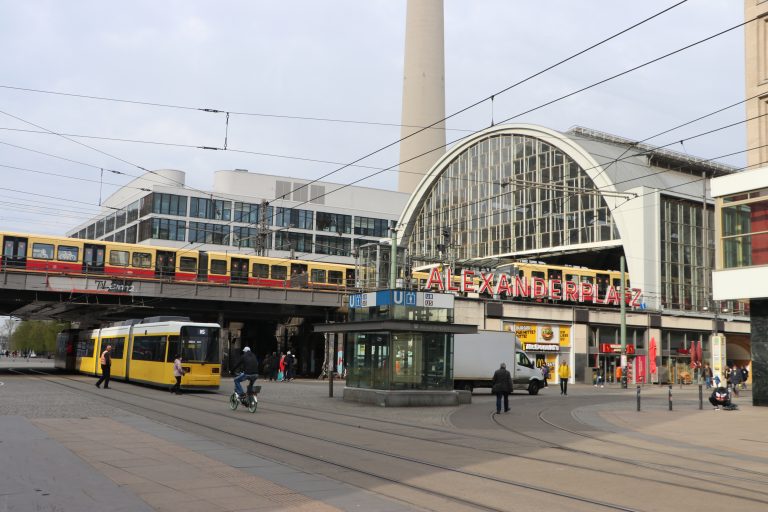

World Time Clock
Right next to the Alexanderplatz station is a little square of the same name. Here you can gather yourself with a coffee while enjoying the view of the fabulous Urania World Clock.
There are currently 148 cities around its circumference, and you can tell the time from each point. The clock makes for some great photo opportunities with the TV tower in the background.
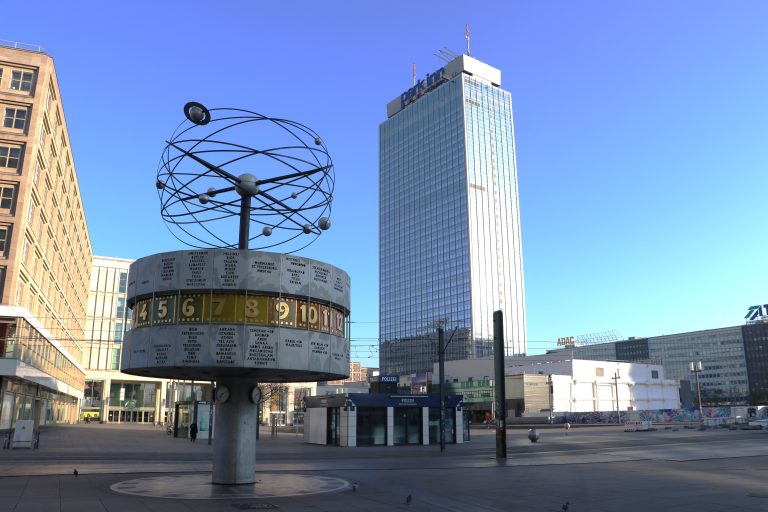
Berliner Fernsehturm
Just behind Alexanderplatz station is the Berliner Fernsehturm or the TV Tower. This TV tower was built in the days of East Germany and is the highest point in Berlin. Here you can enjoy some of the very best views across the city. It was nearly 20 euros to take a lift to the top which I felt was a little on the expensive side. However, I took the elevator up the 203 metres to the top where you can slowly walk around reading the information cards of each view. Sadly, when I visited the tower was full of children parked on or climbing all over these information cards so my experience in the tower was both pricey and frustrating.
The tower does revolve very slowly and, in the evenings, you can book a table at the restaurant or simply enjoy a beer at the bar. I preferred the outside of the tower to the inside. It really is a stunning building and one that comes alive as the sun strikes the reflective glass.
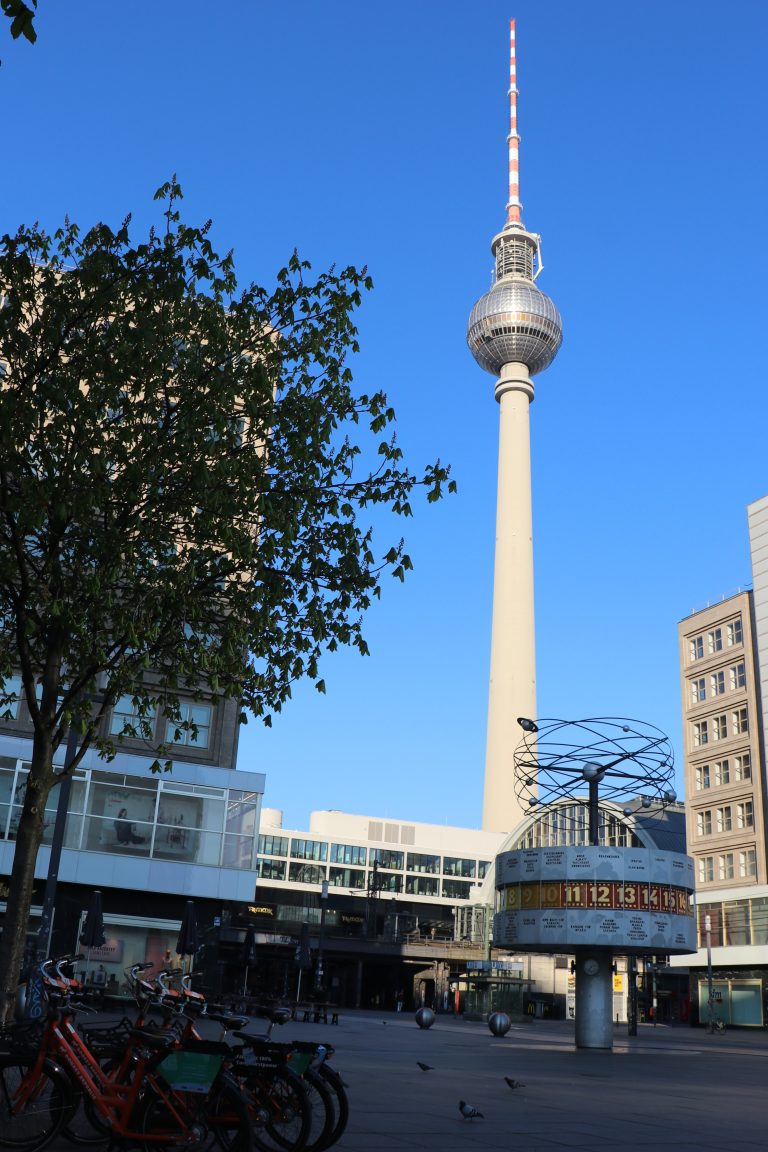
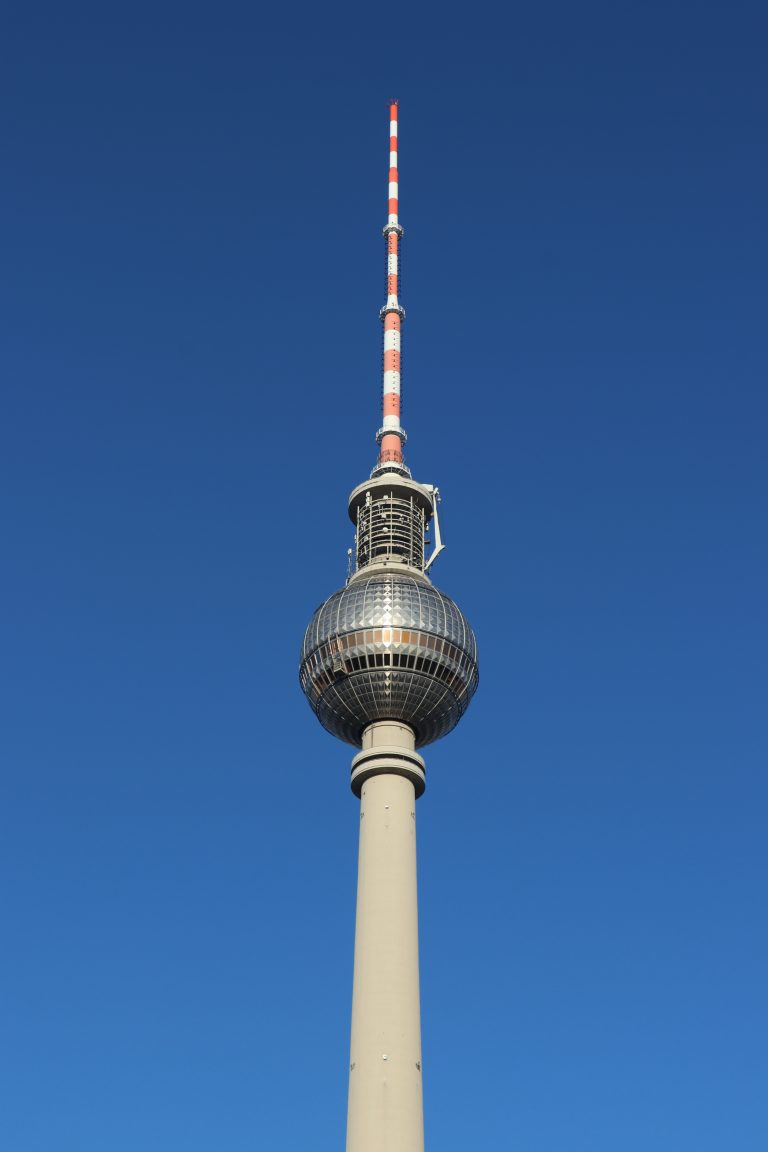
Marienkirche (St. Mary’s Church)
Dating back to the late 13th century and standing at the base of the Fernsehturm is Berlin’s second–oldest church, the Lutheran Protestant church Marienkirche. It is quite a simple church in appearance, and this is perhaps part of its appeal. Outside is a statue dedicated to Martin Luther and a pretty fountain where I took the opportunity to catch my breath and study the map.
Inside this church is its most striking exhibit, the 22-metre frieze, Der Totentanz (The Dance of Death) which was painted in 1475 and refers to the great plague. Also worth seeing is the elaborate marble baroque pulpit carved by Andreas Schlüter in 1703 as well as the recently restored church organ.
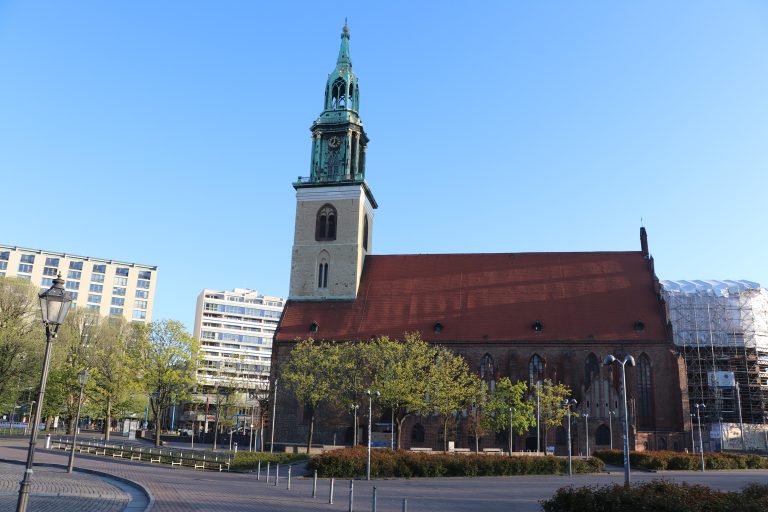
Rotes Rathaus
The Red City Hall is one of Berlin’s most famous landmarks and is the seat of the Governing Mayor and the Berlin Senate.
Built between 1861 and 1869 this beautiful building is named due to its striking red appearance. At 74 metres in height, the Rathaus has four wings around three open courtyards and over 247 rooms that include Ceremonial Halls, galleries, and a former library used today for exhibitions and events.
The great appeal of this building is if you get the chance to see it at sunrise or sunset as the light strikes the façade of this majestic building.
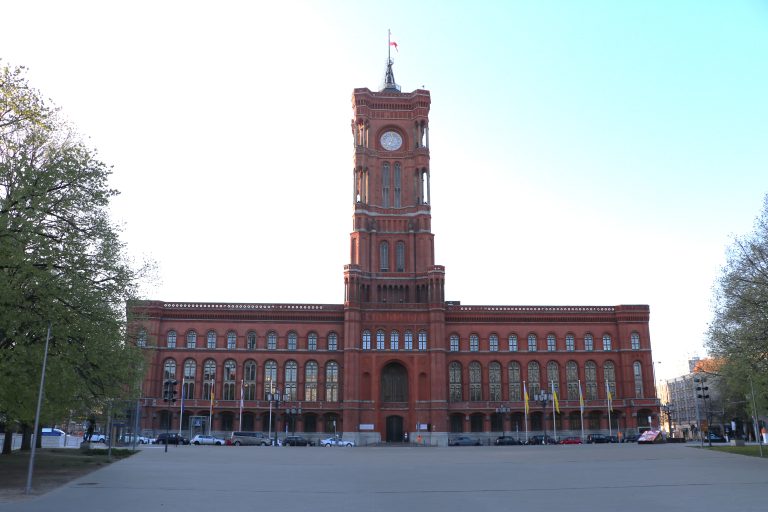
DDR Museum
If you are looking to discover the story of life in the German Democratic Republic, then a visit to the DDR museum is a must. The highlight for me was the five-room flat where you can imagine yourself living during these times. The kitchen, children’s room, and living room conjure up thoughts of how life used to be.
There is an interactive area dedicated to the Trabant – East Germany’s simple yet oh-so-popular cult vehicle and an exhibition dedicated to many other simple motors from those days. For sports fans, particular interest is a ball used in a famous East versus West Germany football match.
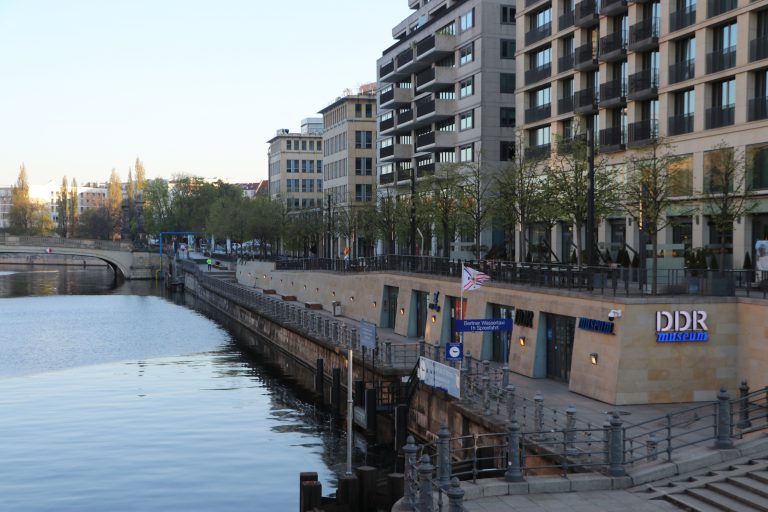
Museum Island
For those looking to revel in Berlin’s world-class museums, there is no better place than Museum Island which is in the middle of the Spree River. A UNESCO World Heritage Site there are five incredible museums to visit.
The Pergamon Museum is home to exhibitions from the Middle East, as well as Islamic Art and the Antiquity Collection houses some of the most significant collections of Greek and Roman Art.
There is the Altes Museum with its amazing collection of Greek and Roman antiquities, The Old National Art Gallery and the Neues Museum cover Egyptian history amongst others. Finally, the Bode Museum houses the Museum of Byzantine Art and the Sculpture Collection plus one of the largest coin collections in the world.
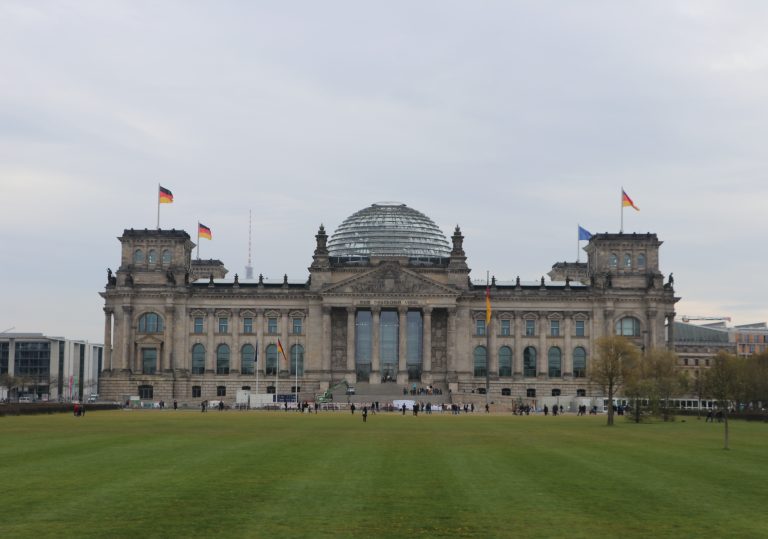
Berlin Cathedral
Very close to Museum Island is the Berlin Cathedral which is the largest in the city. The cathedral was badly damaged during World War Two, but it has been beautifully restored throughout including a lovely viewing area of the city. The crypt below the cathedral is also worth visiting.
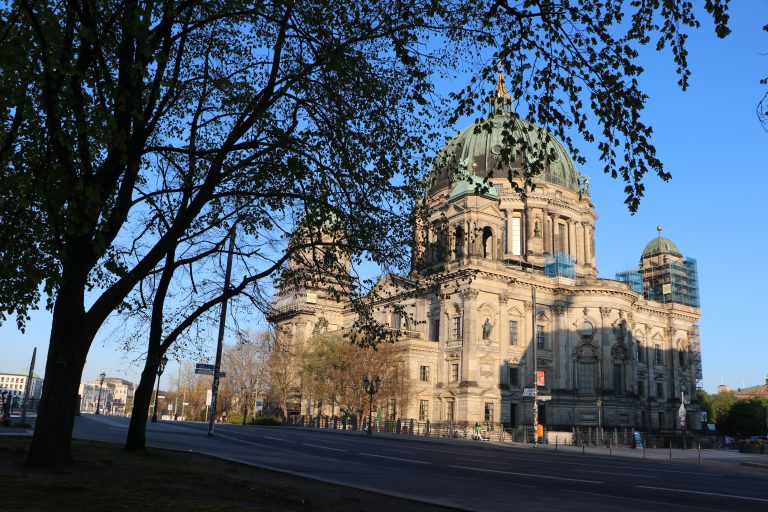
Humboldt Forum
In the heart of Berlin, right across from Museum Island, is an exciting new urban space and forum for culture, art, and science. It is a place where the history of Berlin and the country of Germany is reflected. Extending over an area of around 30,000 square metres this enormous building was once a former Baroque palace and has a long yet tragic history. After the second world war, the palace was destroyed but over time the building has been carefully and meticulously restored. It is now home to a wide choice of exhibitions, museums, and galleries.
Some of the more popular exhibitions, but by no means all, are the Sculpture Hall, the Humbolt Laboratory, the Ethnological Museum, the Museum of Asian Art, the Berlin Exhibition, and many more.
Unter Del Linden
The most celebrated and oldest boulevard in Berlin is the Unter Del Linden. Stretching 1.5km, right through the heart of Berlin in the area known as Mitte. It takes you from the Humbolt Forum to the Brandenburg Gate. This wide-open boulevard was, as the name suggests, once lined with lime trees Linden with the first planted in 1647.
Over the years that followed and as the royal power grew in the city so did the architecture. The Zeughaus, the Friedrichstadt and, under Frederick the Great, the Kronprinzenpalais, the Prinzessinnenpalais, the Opernhaus and the Palace for Prince Heinrich, which is now the Humboldt University.
After the Second World War, Unter den Linden was in ruins, and it was not until 1958 that work began to reconstruct the boulevard. Since reunification, many more buildings have been restored and rebuilt.
As I strolled along this pretty boulevard, I thought that it had that similar feel to the Champs Elysee in Paris with its calm ambience alongside embassies, five-star hotels and high-end boutiques.
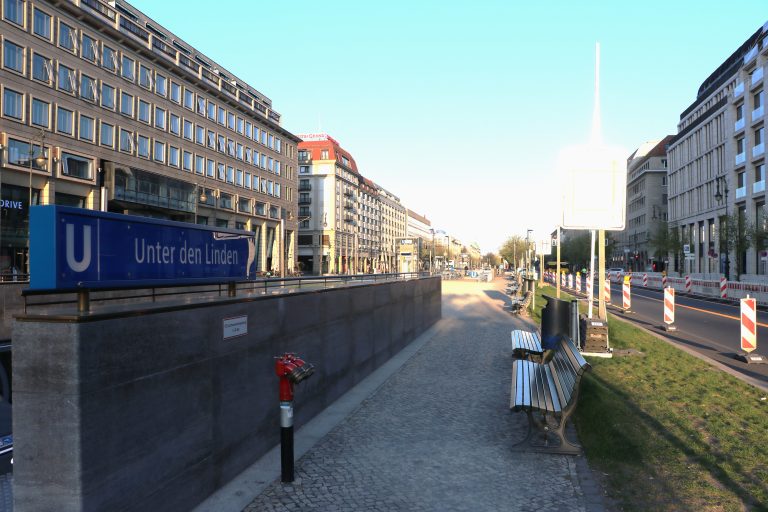
Reichstag
The Reichstag building is the home of the German Parliament or Bundestag. Designed by Norman Foster, it has survived World Wars, the Nazis, fires, bombings and the breakup of the country.
After German reunification in 1990, the Reichstag was restored and today is one of the most popular sites in Berlin. There is free entrance to the glass dome on top from where you can enjoy some of the best views of the city.
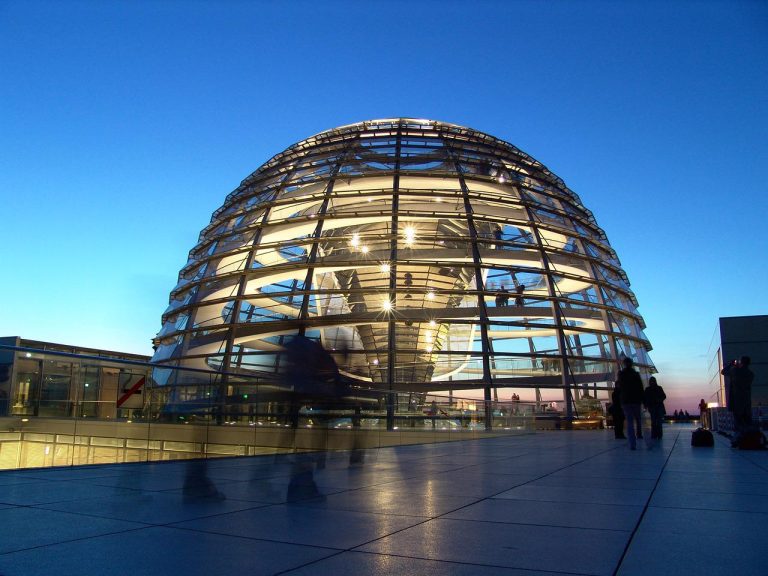
Tiergarten
Alongside the Brandenburg Gate is the Tiergarten, an enormous park of almost 519 acres where locals take their daily exercise. It was once royal hunting grounds but in the late 17th century it was turned into a park for the local community.
Over the years the parks trees has been replenished and the area is now home to some glorious walks, the Siegessäule monument (Victory Column), food stalls and even a refreshing beer garden.
Brandenburg Gate
Constructed in 1788, the most famous and iconic landmark in Berlin is of course the Brandenburg Gate. This old city gate is 26 metres high, 65.5 metres long and 11 metres deep. Alongside it is the pretty Pariser Platz (square) which leads on to “Unter den Linden”.
The site came to symbolise Berlin’s Cold War division between East and West – and, since the fall of the Wall, a reunified Germany. The site is a popular location for New Year’s Eve celebrations.
I visited early in my trip to Berlin when it was crowded and full of tourists clambering for their selfies. With the weather good the following day I got up very early and headed to the Gate for sunrise. I was the only person there along with a couple of chaps who had brought the fomer chancellor Willy Brandt’s Mercedes to the sight for some nostalgic 50-year-old photos. This was a highlight of my visit to Berlin – the Brandenburg gate all to myself!
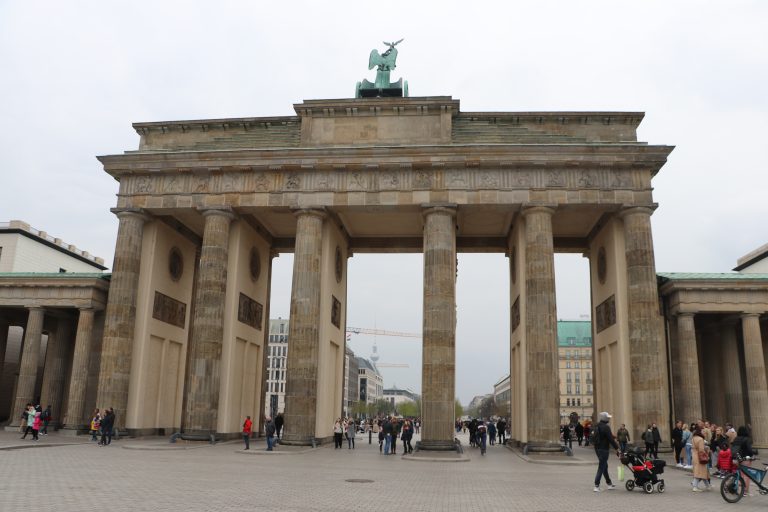
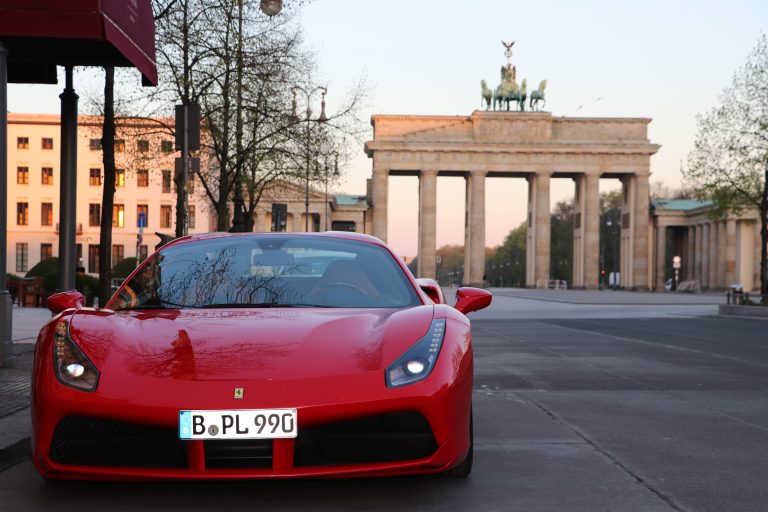
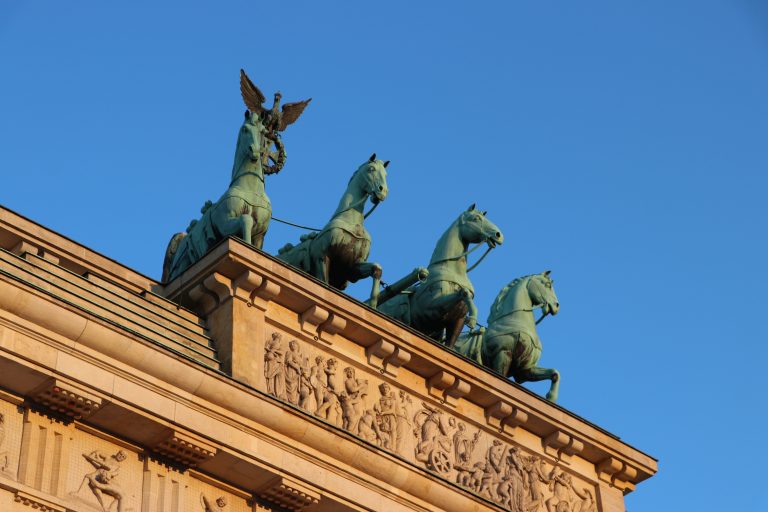
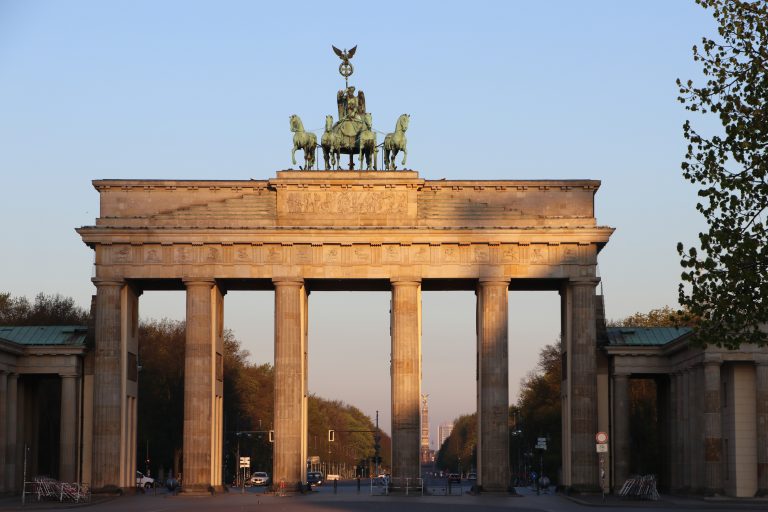
Memorial to the Murdered Jews of Europe
The Holocaust Memorial is also known as The Memorial to the Murdered Jews of Europe. Located right next to the Brandenburg Gate, the memorial is free for visitors.
There is an information centre that will provide you with the story of the holocaust but without doubt the most haunting and uneasy moment is as you walk through the grounds that are made up of 2711 blocks that slowly descend the further you walk into the memorial.
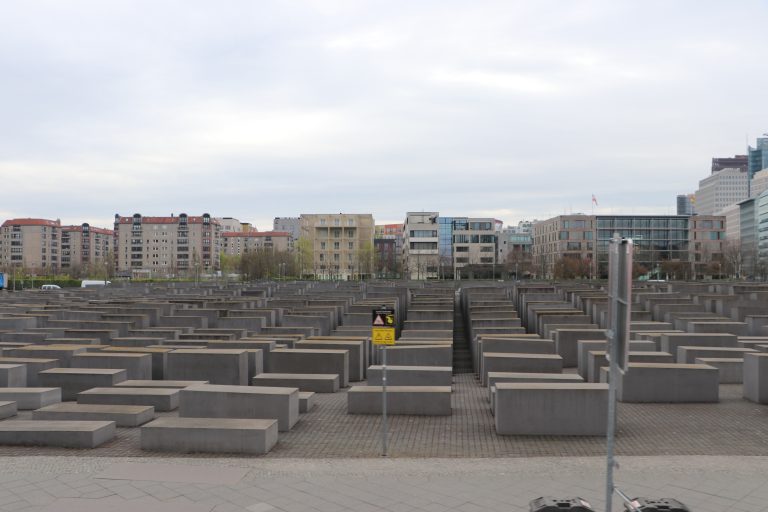
Trabant Museum
Just a stone’s throw from Checkpoint Charlie is the Trabant forecourt and further along the road is the museum which charts the story of this iconic motor vehicle.
Here you can revel in the history of East Germany’s famous motor car that today has become quite a valuable collector’s item which is a surprise given the millions that were produced not to mention its remarkably simple engineering.
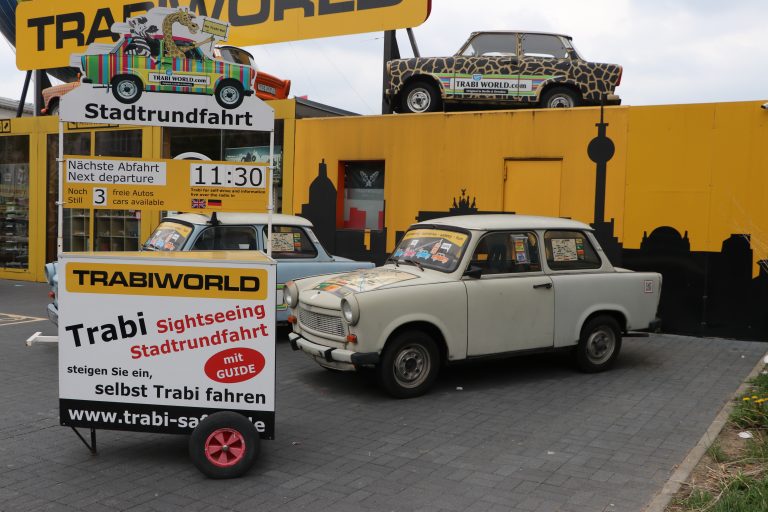
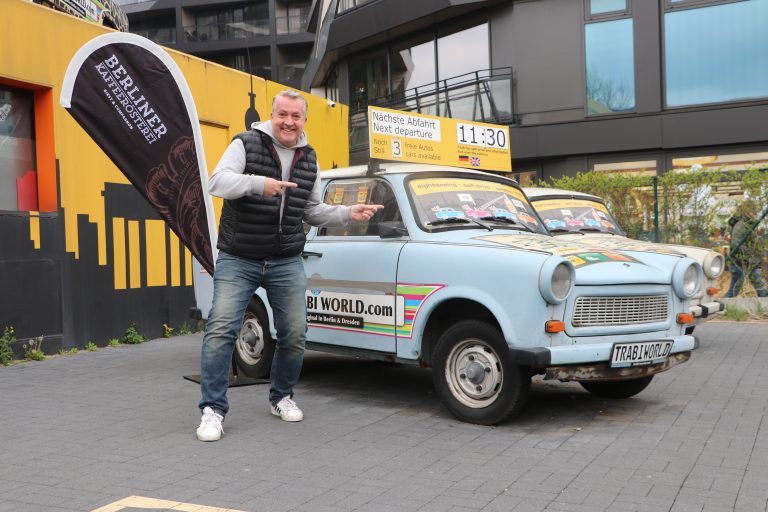
Checkpoint Charlie, Berlin
Checkpoint Charlie is the well-known border crossing point between East Berlin and West Berlin. This location was featured in many films including the award-winning, Bridge of Spies with Tom Hanks.
I first stopped for a coffee in the Einstein Kaffee with a view of the checkpoint right outside. A steady stream of tourists queued and slipped a local guy a euro to have their photo taken behind the sandbags. He must have made a fortune and to this day I am not sure if he worked there or was taking advantage of the situation.

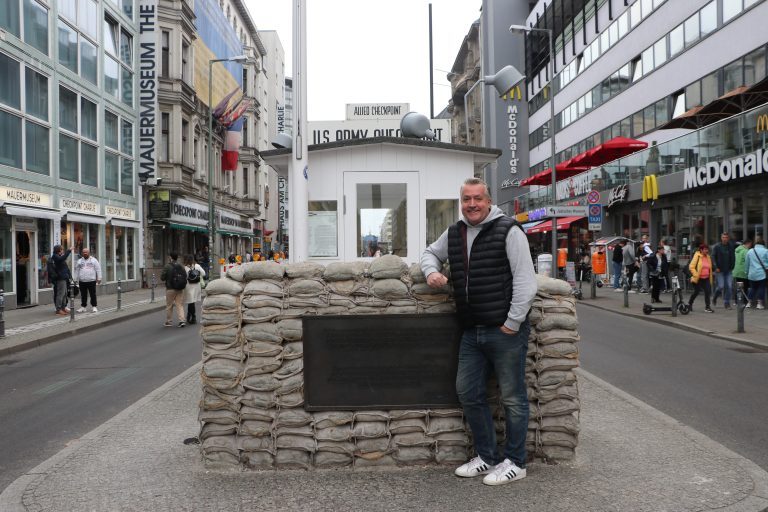
The Wall Museum
Just across from Checkpoint Charlie is the Wall Museum. I really enjoyed this simple mainly outdoors exhibition which as you walk around, charts the story of the wall on picture boards. There is a small piece of the wall here where you can, as I did, take a photo. As well as this there is also a small visitor centre, a souvenir shop, and a place to get some refreshments and sit down.
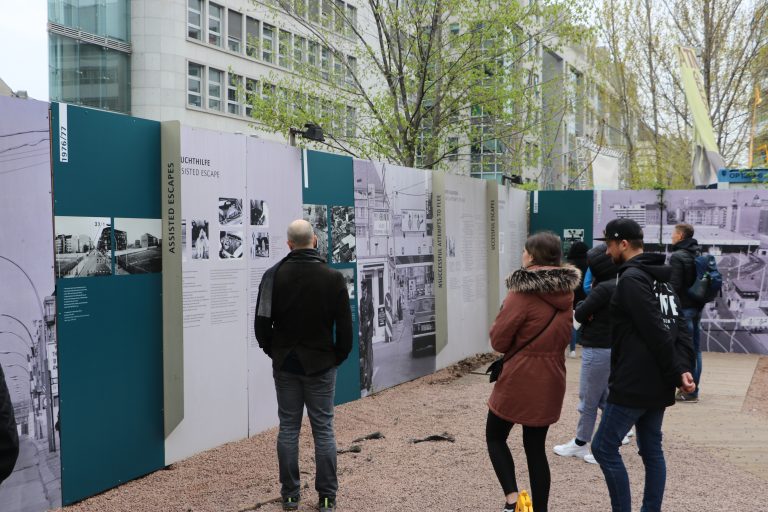

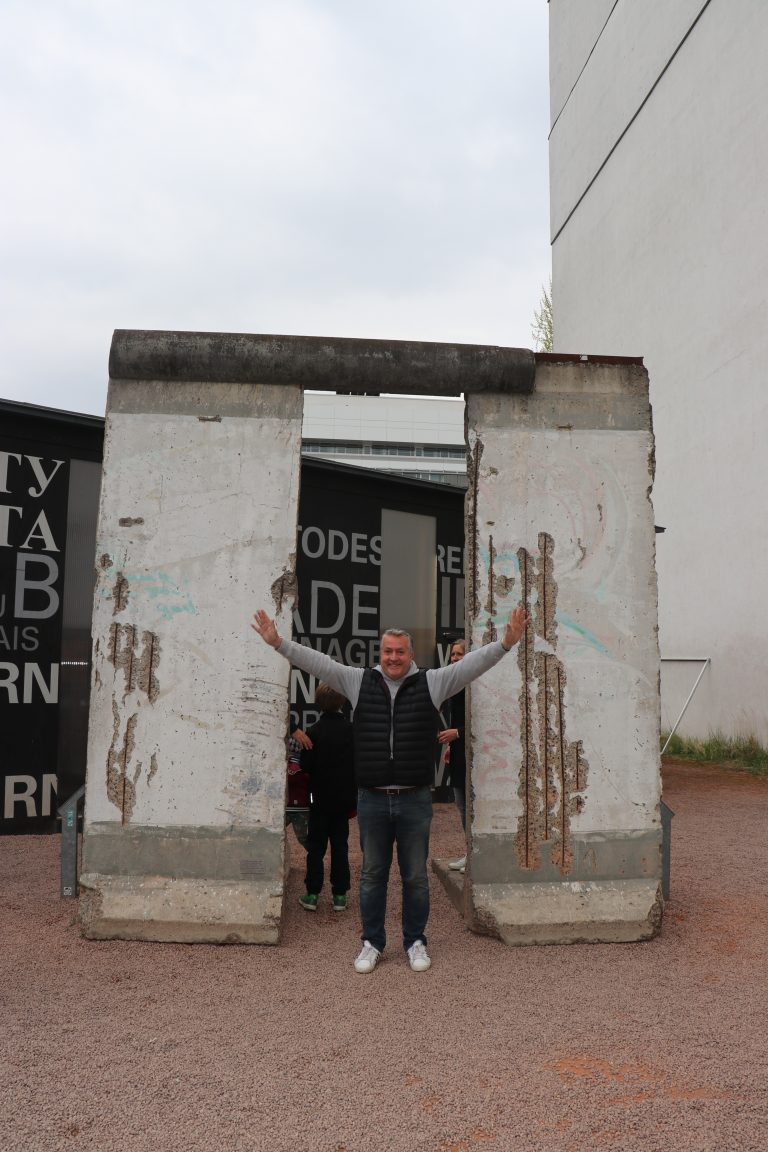
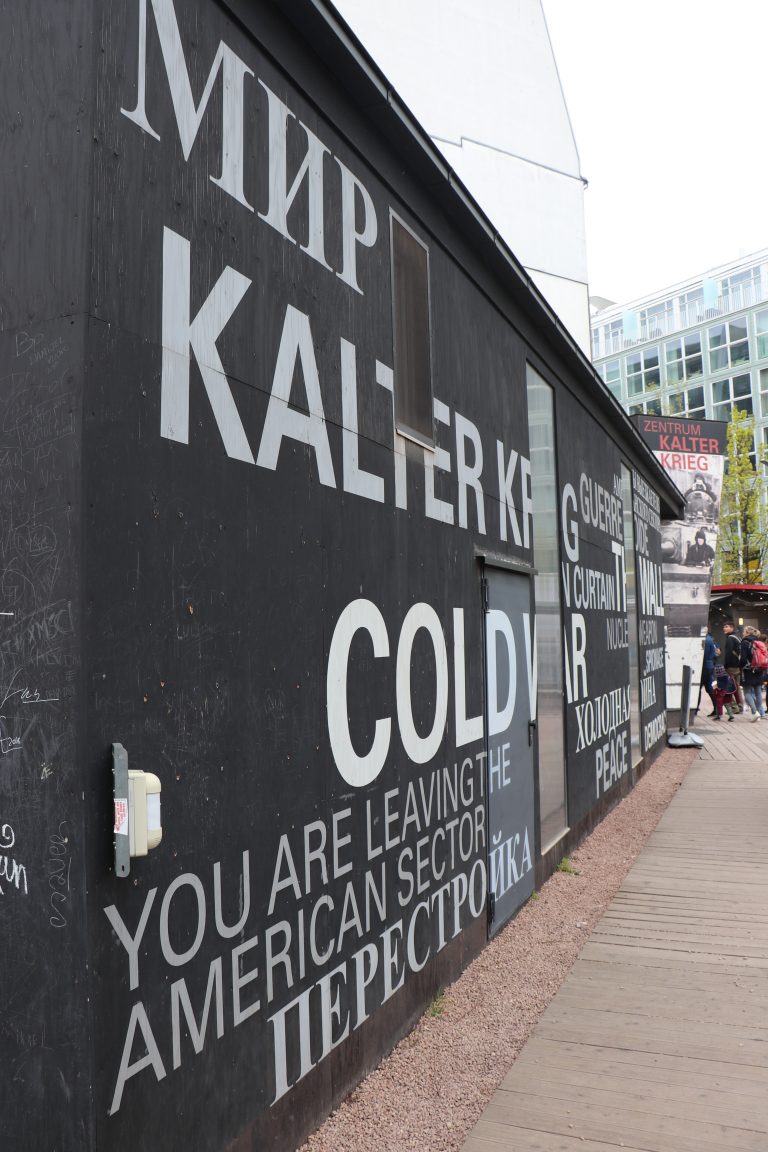
VW Museum
Whilst not a standout exhibition I popped into this free to enter exhibition where if you have a love of the bug – the Volkswagen Beetle – then you will be in your element.
Alongside original Beetles from the early days are Campervans, modern Volkswagen creations, and a number of other vehicles that will give the petrol heads amongst us an hour or two of enjoyment.
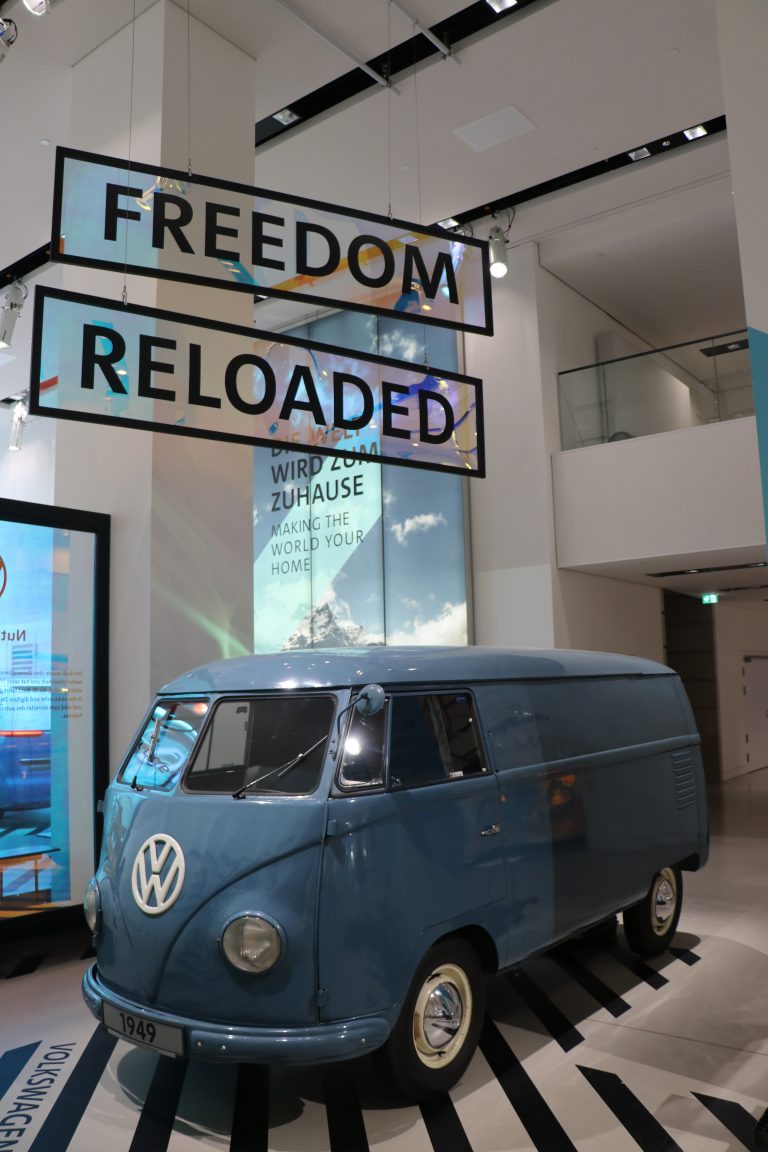
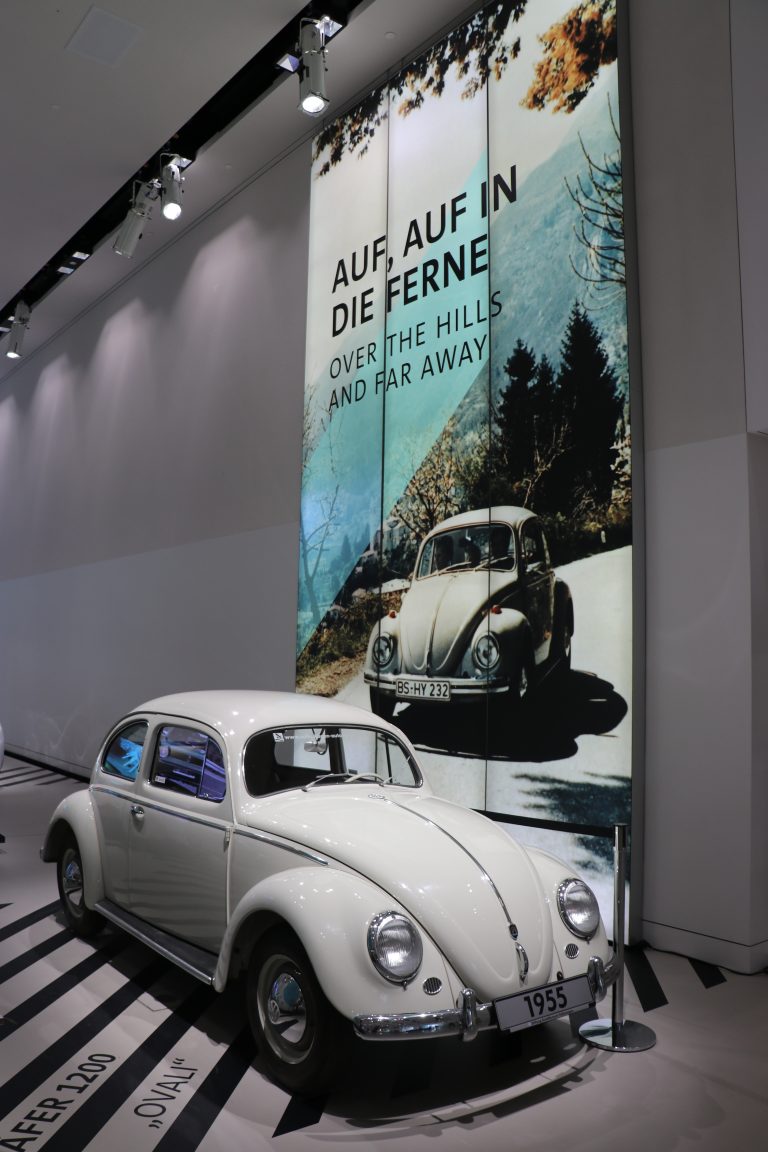
East Side Gallery
The longest remaining section spanning 1.3km of the Berlin Wall is known as the East Side Gallery on the Spree river. Located at the former borders of the Soviet and American sectors, next to the Oberbaumbrücke, which is one of the most historically important bridges in Berlin.
There are 101 murals from 118 different artists with the most famous piece the mural of Leonid Brezhnev (the former General Secretary of the Communist Party of the Soviet Union), and Erich Honecker (the former General Secretary of the Socialist Unity Party) kissing.
The area is visited both during the day and in the evening as locally there are numerous bars, nightclubs, and attractions such as the impressive Mercedes Benz Arena, which is used for many events.
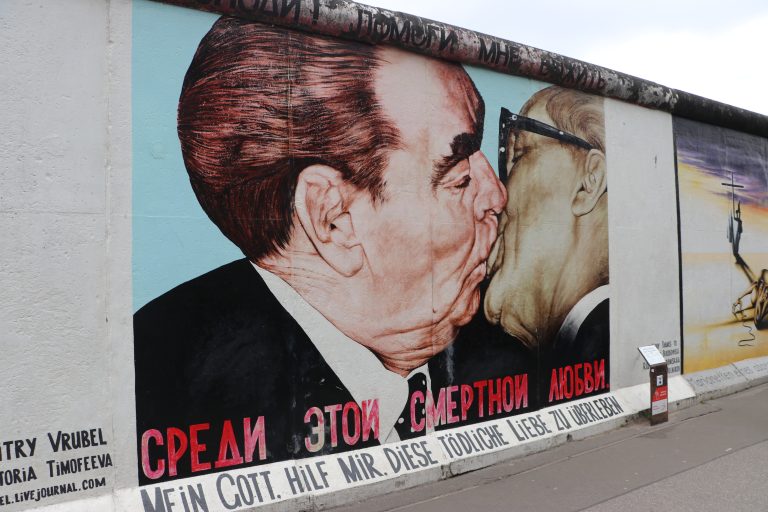

Berlin Nightlife
The nightlife in Berlin is legendary but for such a huge city where do you start?
Visit the bohemian district of Kreuzberg which used to be the home of West Berlin Punk and was always an area where people challenged authority. Today the district plays host to some of the coolest and trendiest bars in the city such as those on Oranienstrasse as well as a hipster scene of creative start-ups and digital media.
Torstrasse in the clubbing district of Mitte has a history going back many years as it has always been a popular spot to hit after hours. Established way back in the GDR, the cool club Kaffee Burger is best known as the home of the legendary sounds of Russian Disco or Russendisko. Today the appearance of many media and cultural businesses has driven an increase in members only bars as well as stylish cocktail bars, particularly near Rosenthaler Platz.
The area called Nollendorfplatz in Schöneberg is the oldest LGBTQ neighbourhood in Berlin. There is a multitude of cafés, restaurants, gyms, boutiques, and bookshops here, many of which cater specially to gay and lesbian customers. In mid-July each year, the neighbourhood hosts the gay and lesbian street festival where over 350,000 visitors come as part of the Berlin Pride Weeks that take place throughout July.
Excursions
As I mentioned there is so much to Berlin that I could not possibly cover everything in one trip or indeed in one travel blog.
Some fascinating parts of the city can be enjoyed as part of a Green Bike Tour. These include the Markthalle and the fascinating Tempelhofer Feld.
A sample of some other trips are to see the Mauerpark for its flea market, the Olympic Stadium, Berlin Zoo for its efforts to protect animal species, the beautiful Oberbaum Bridge, Boat Cruises on the River Spree and Charlottenburg Palace the largest palace in Germany and located just outside of Berlin.
Berlin Travel Blog Summary
And there you have my Berlin travel blog and guide. The more I discovered this amazing city the more I grew to love it.
You need to dedicate time to understand the city rather than try to rush the sights. Whether you are planning to visit for its history, culture, or nightlife or simply to relax and enjoy one of Europe’s most spectacular capital cities – you will not be disappointed.
Berlin has it all.
Contact Information
With thanks to the Visit Berlin Tourist Office for their help in organising my trip to Germany.
To book a Berlin city break contact your local travel agent or tour operator or search online.







